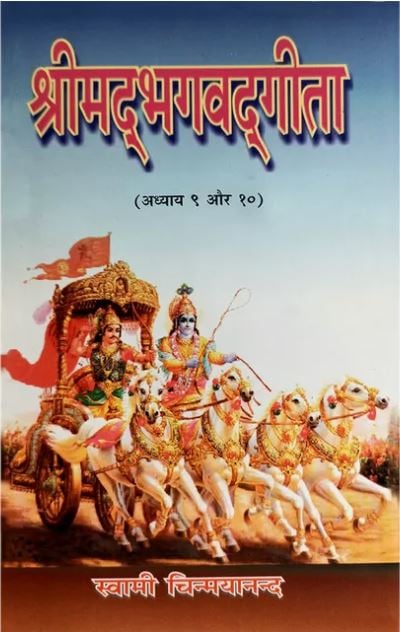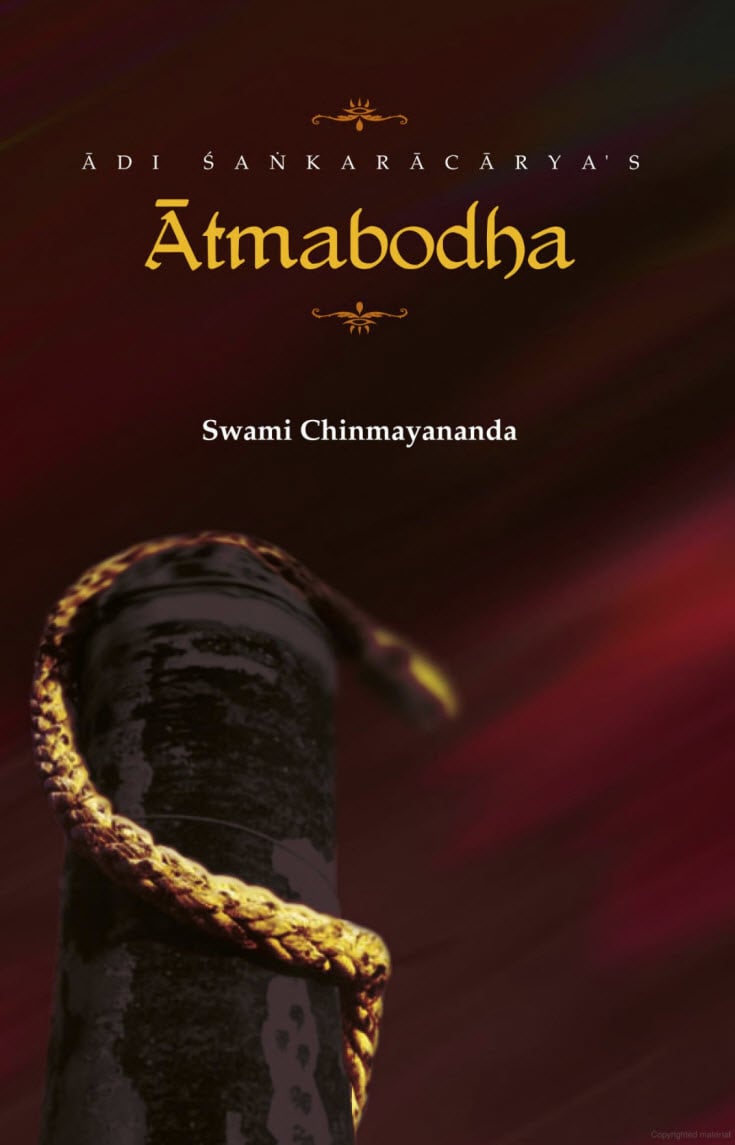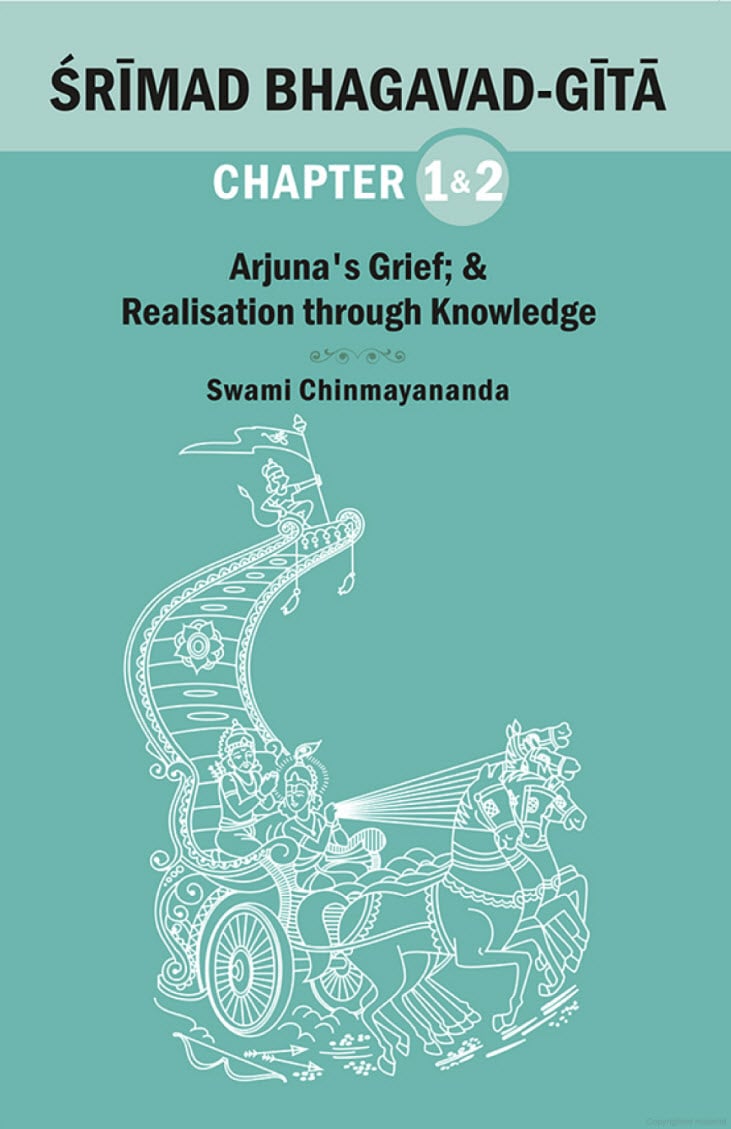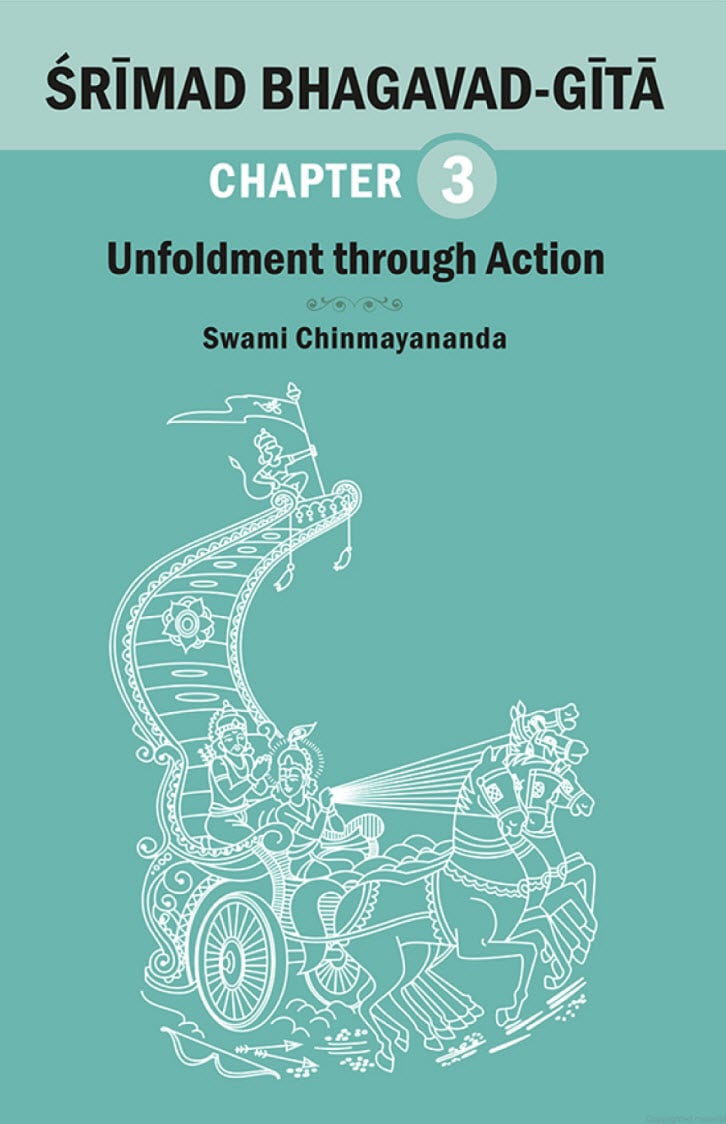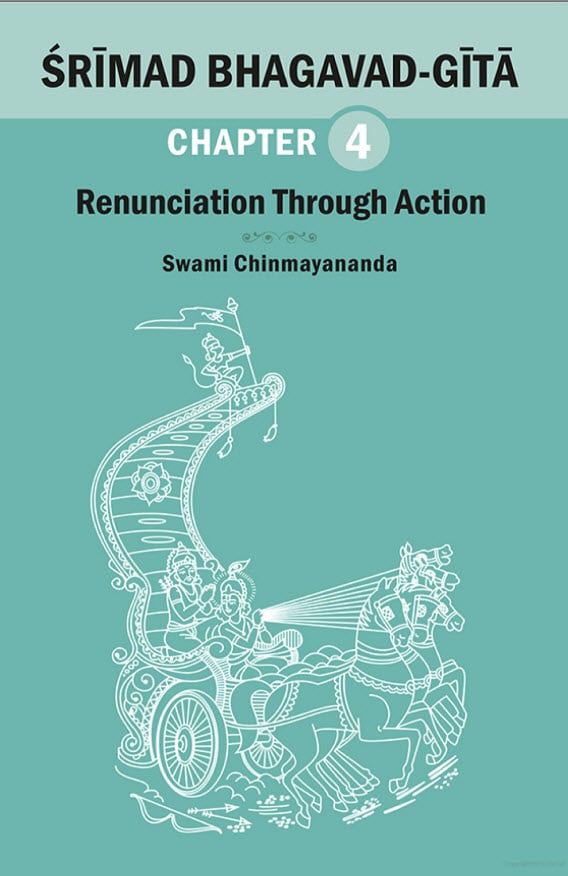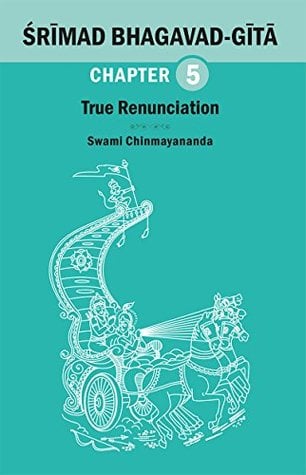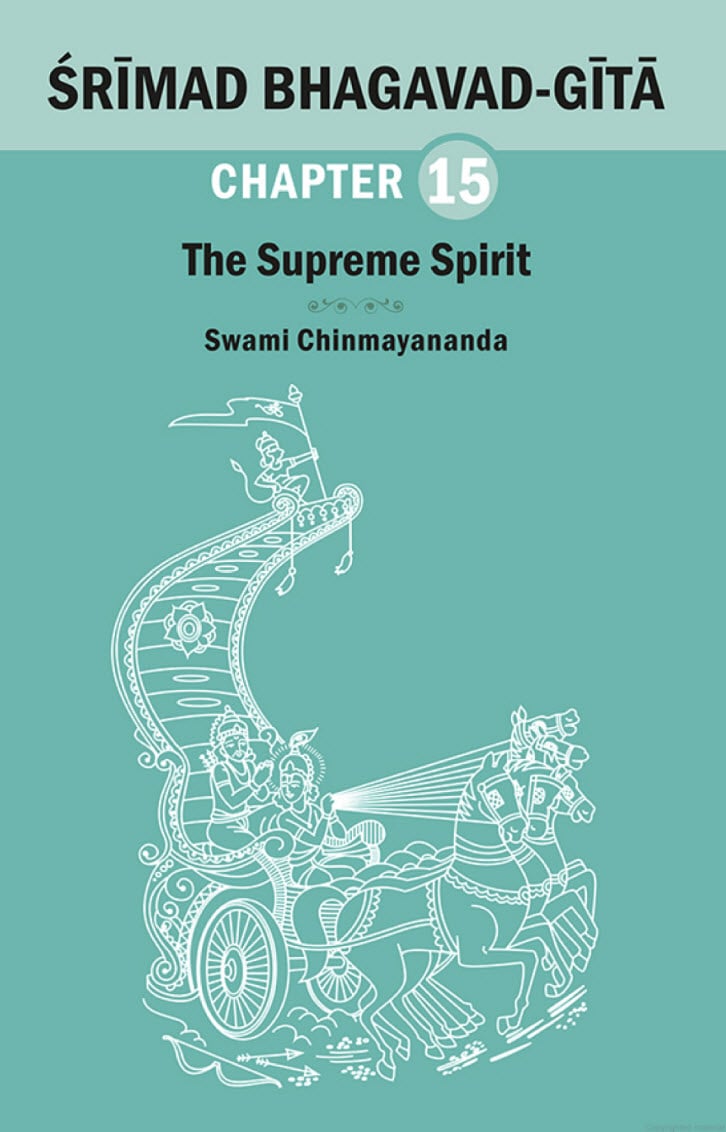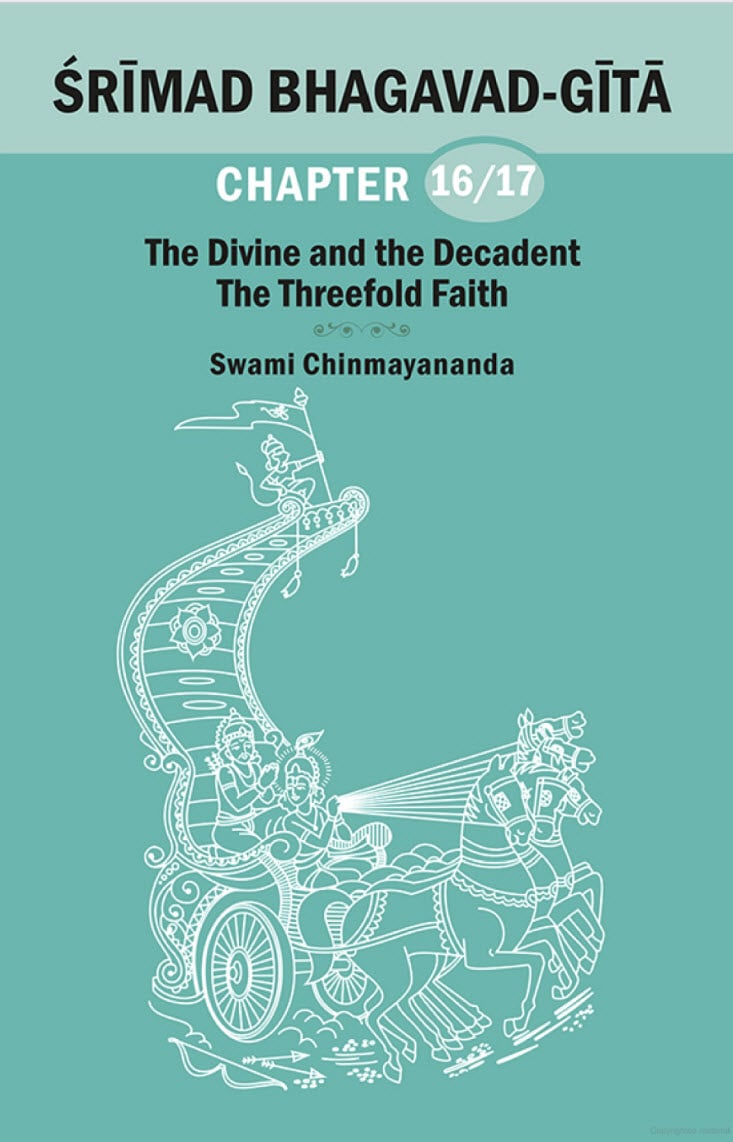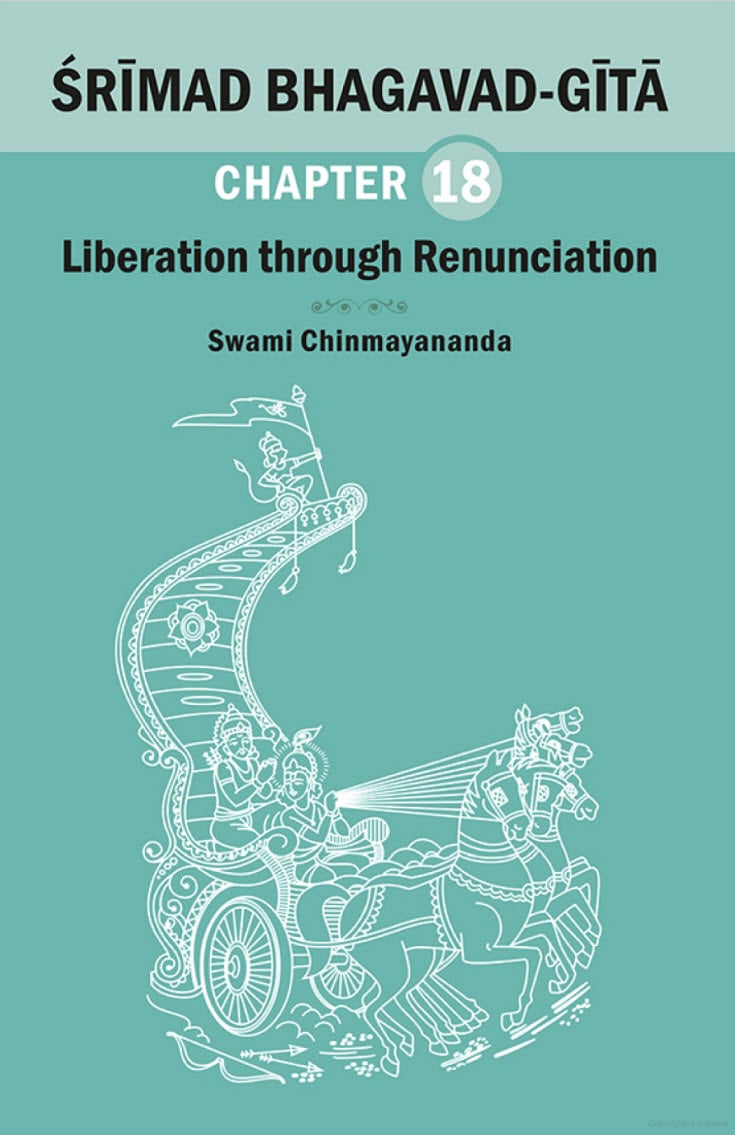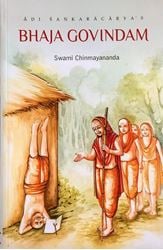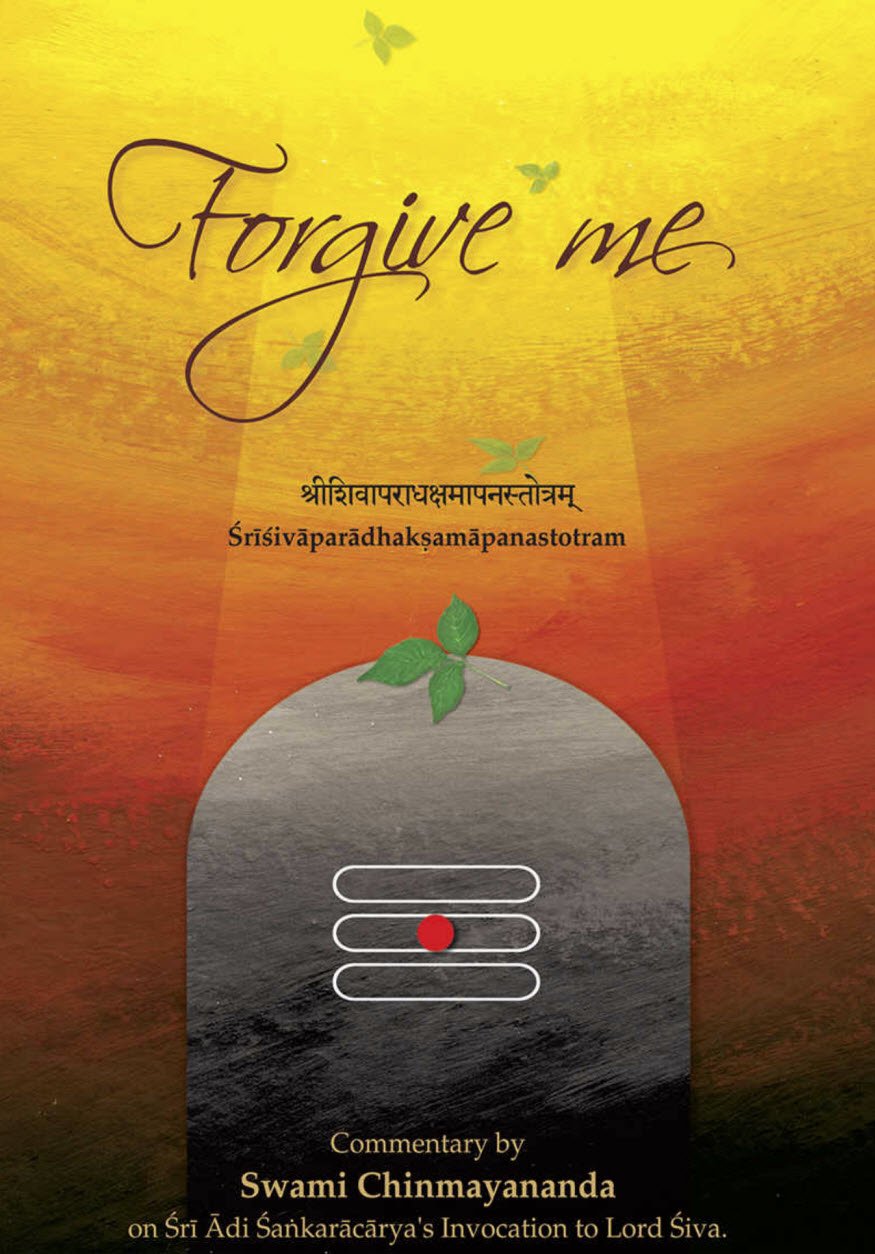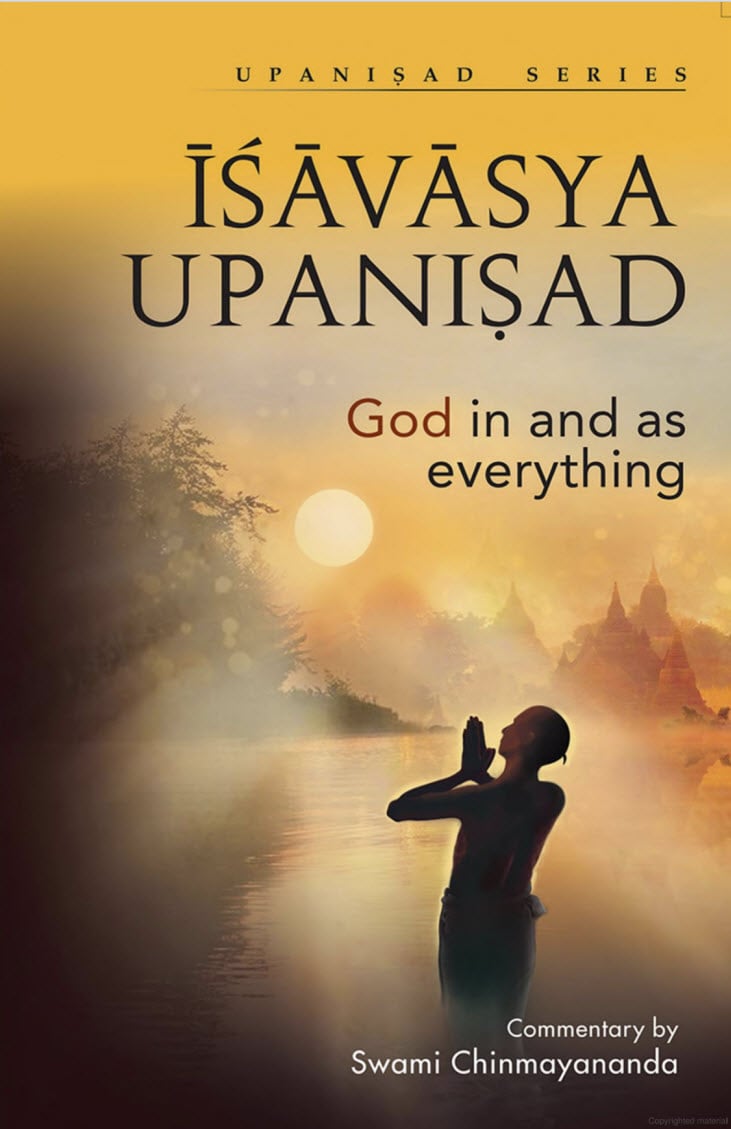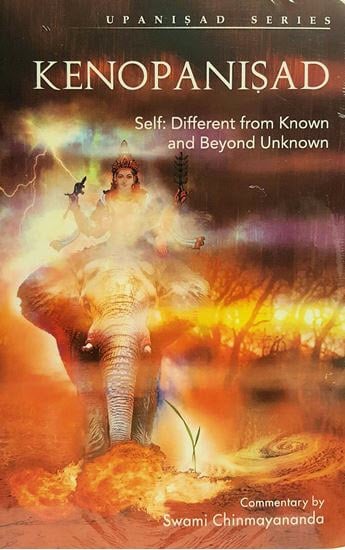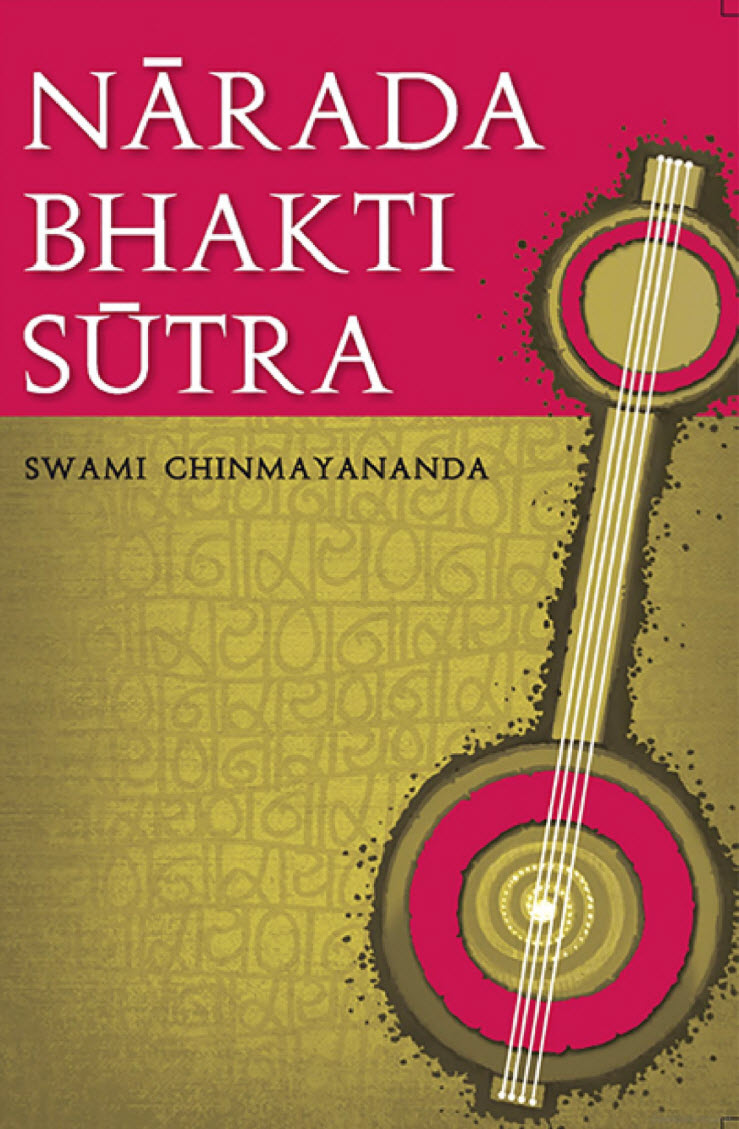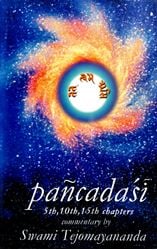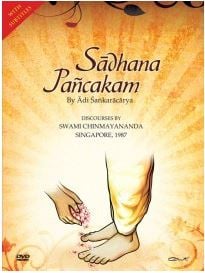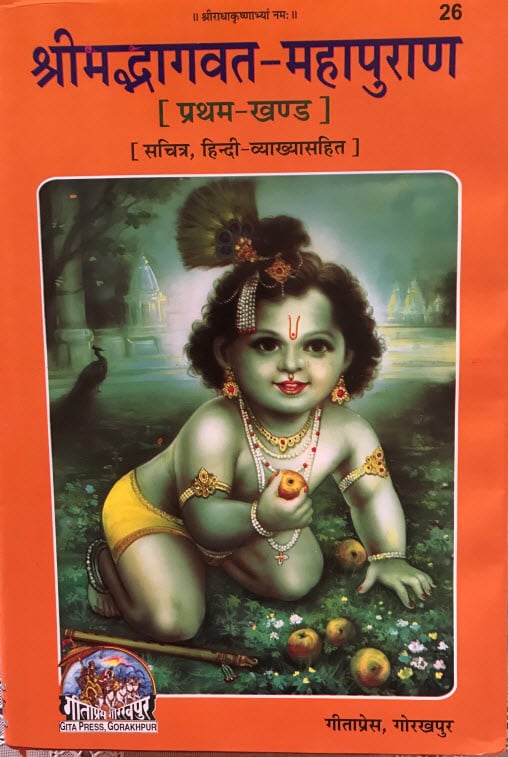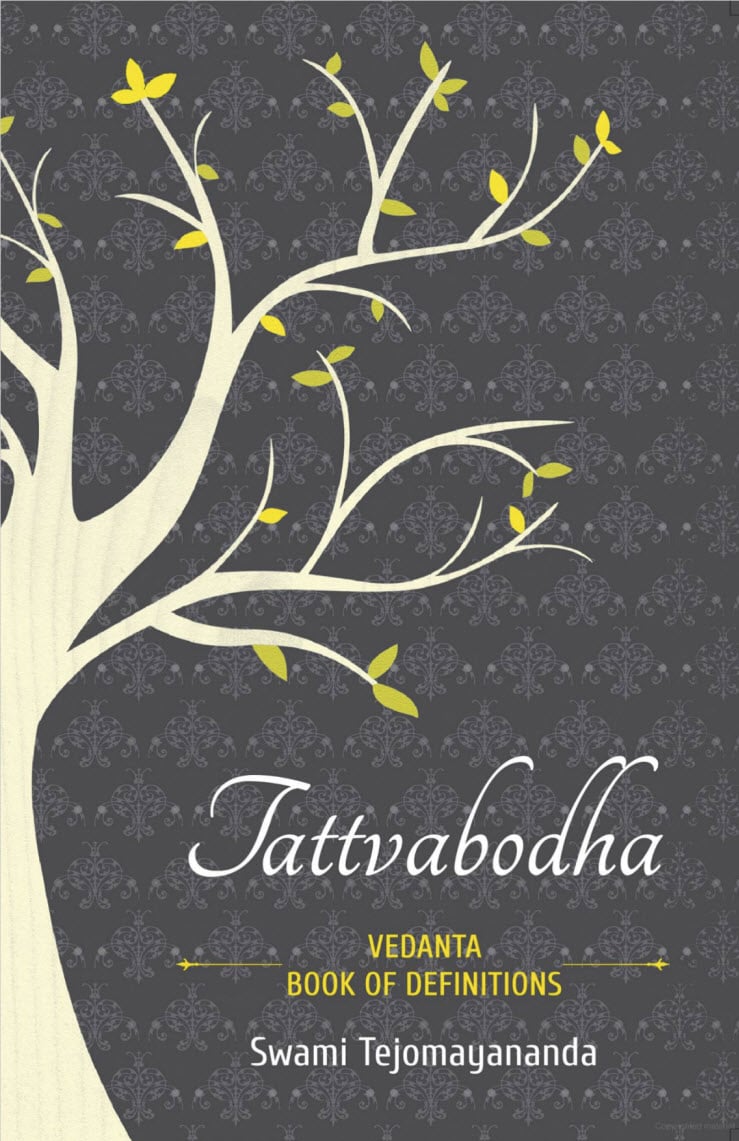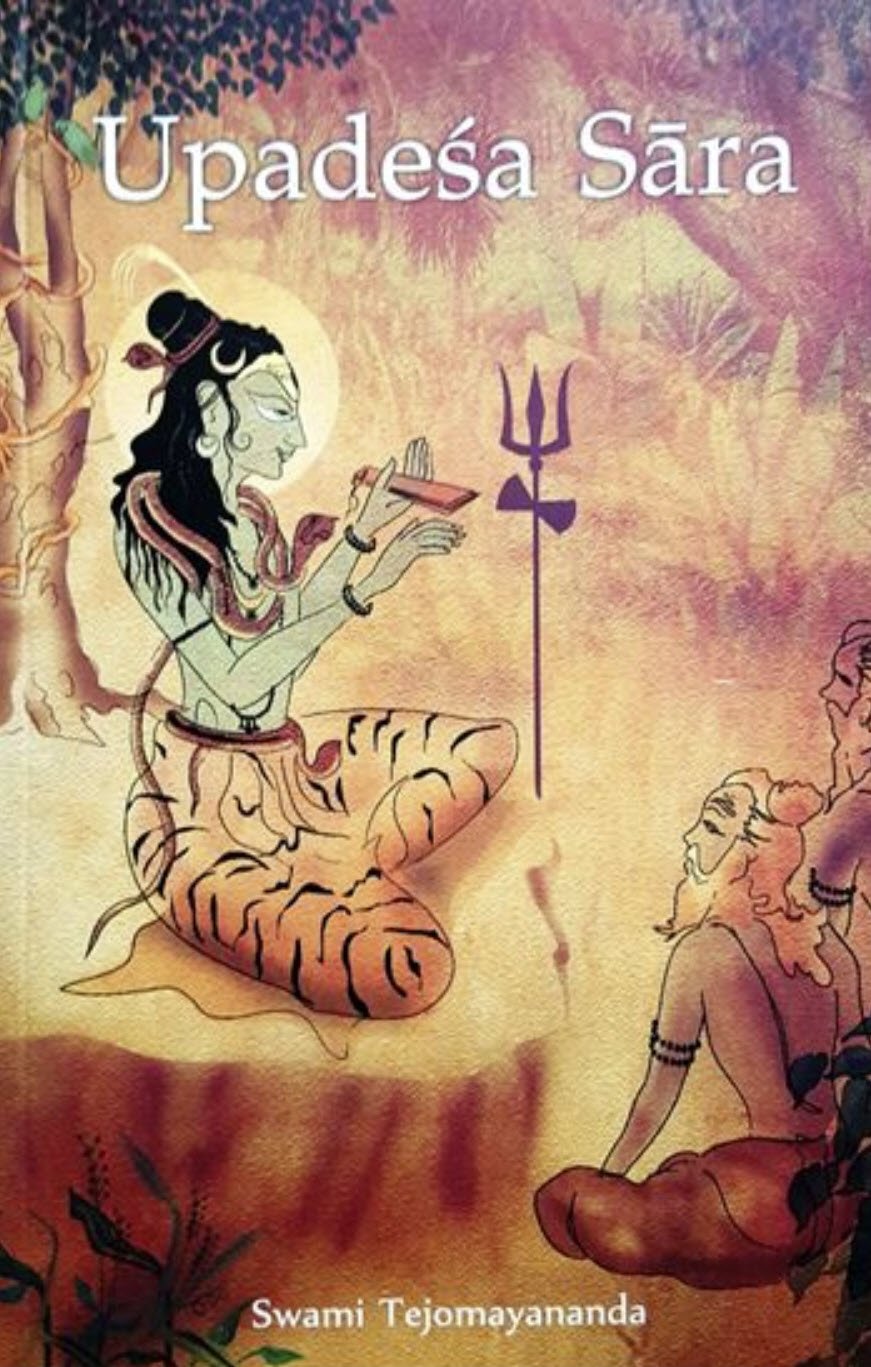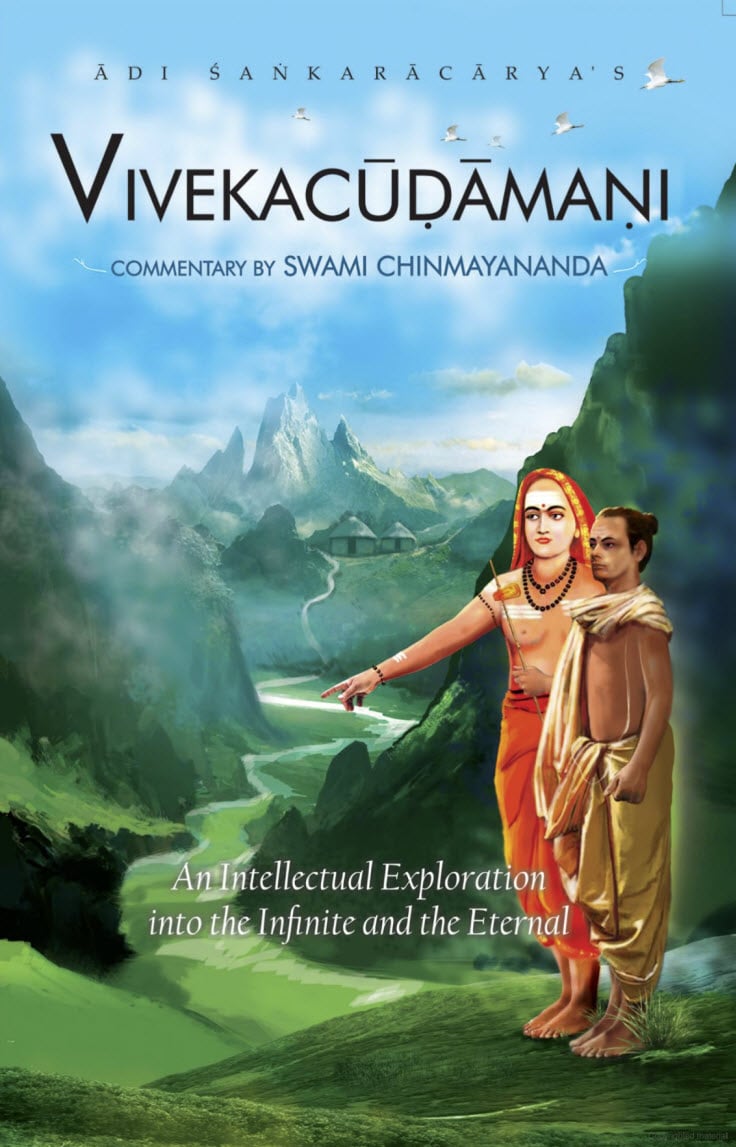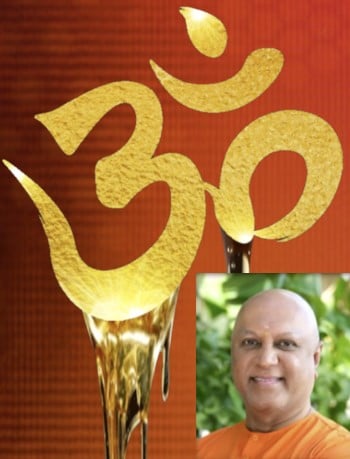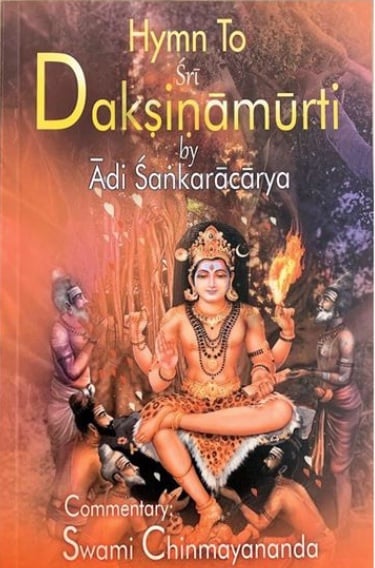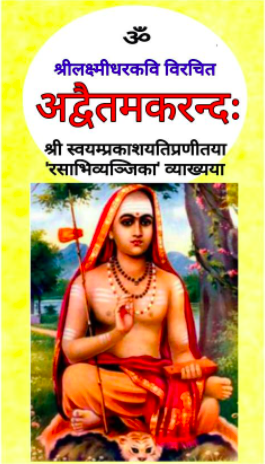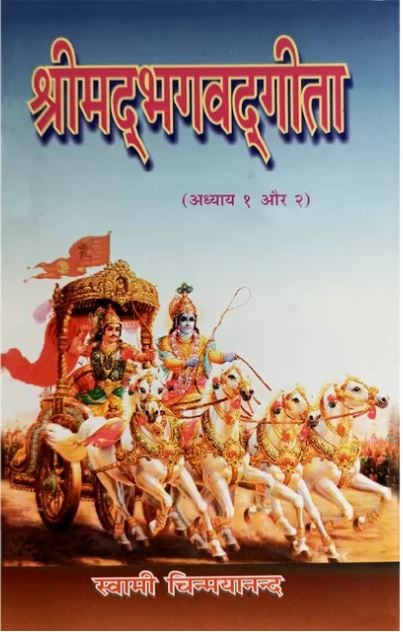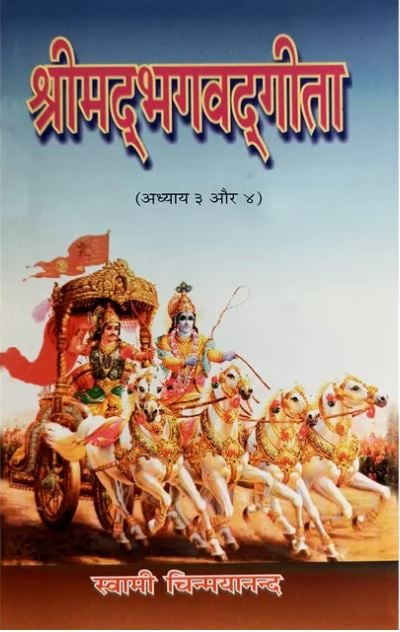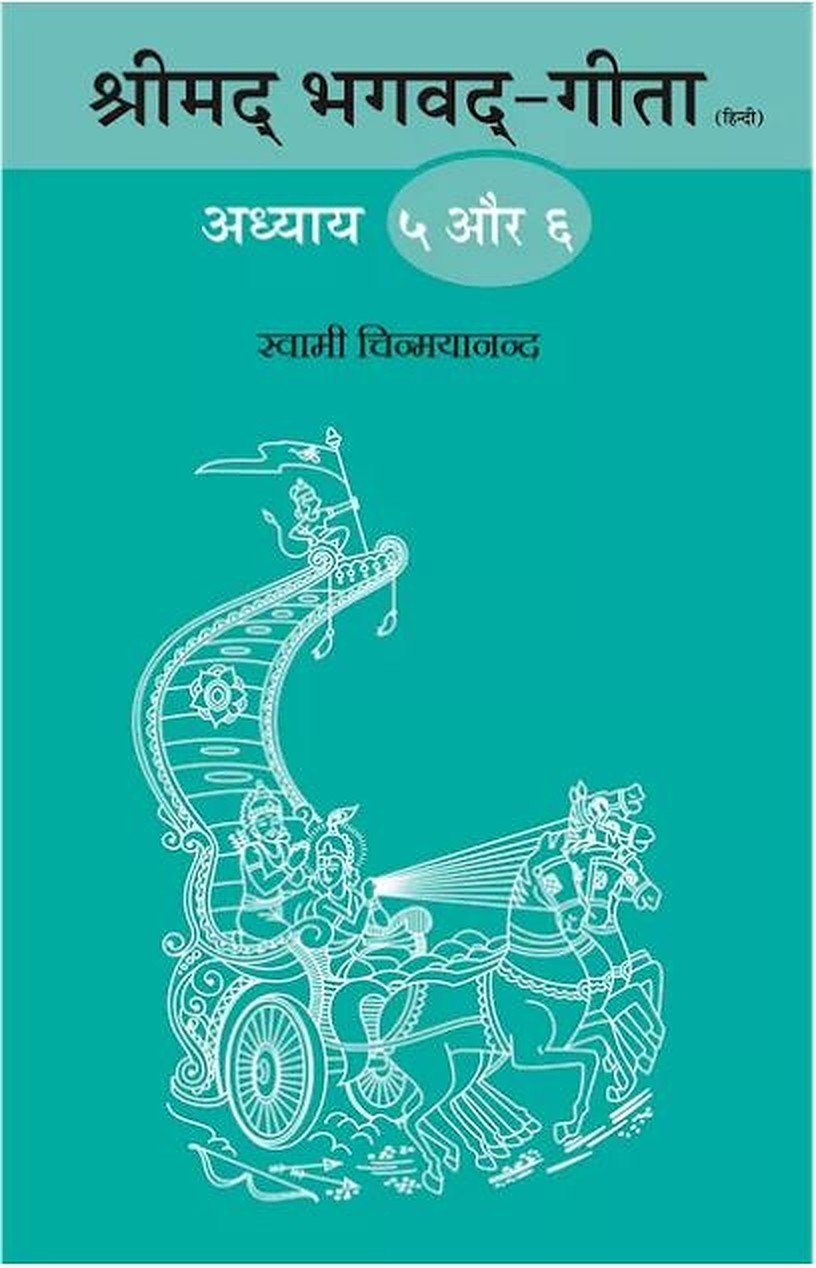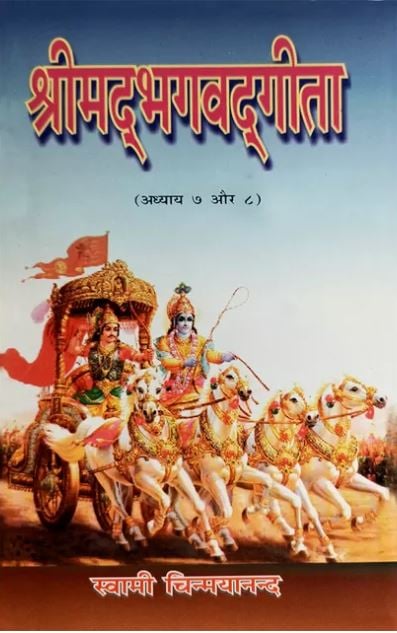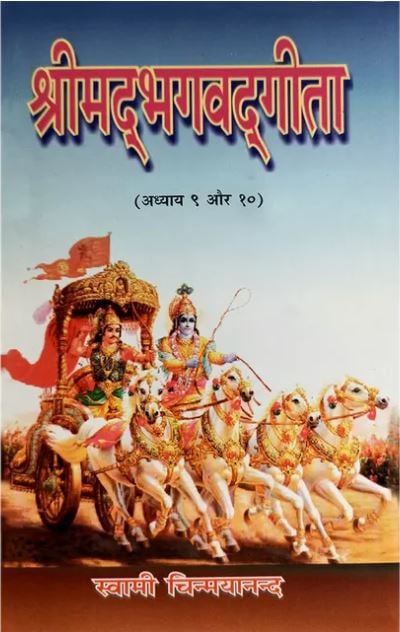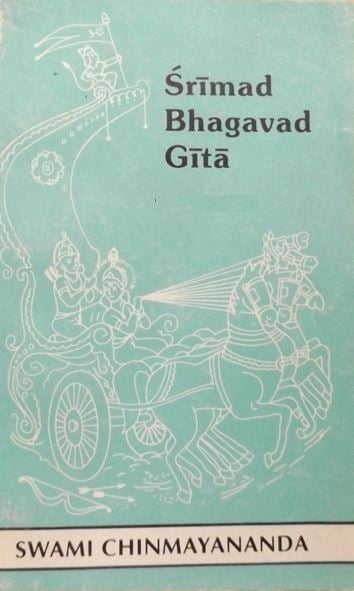Audio Recordings - English
Audio Recordings - Hindi

Atma Bodha
For the Wisdom of Self is the one way to Freedom,
leading beyond all other paths,
As cooking cannot be accomplished without fire,
so Freedom cannot be attained without wisdom.
अविरोधितया कर्म नाविद्यां विनिवर्तयेत् |
विद्याविद्या निहन्त्येव तेजस्तिमिरसङ्ववत् ||
"Religious works cannot destroy ignorance, for it is not in conflict with ignorance. Knowledge alone destroys ignorance, as light destroys dense darkness."
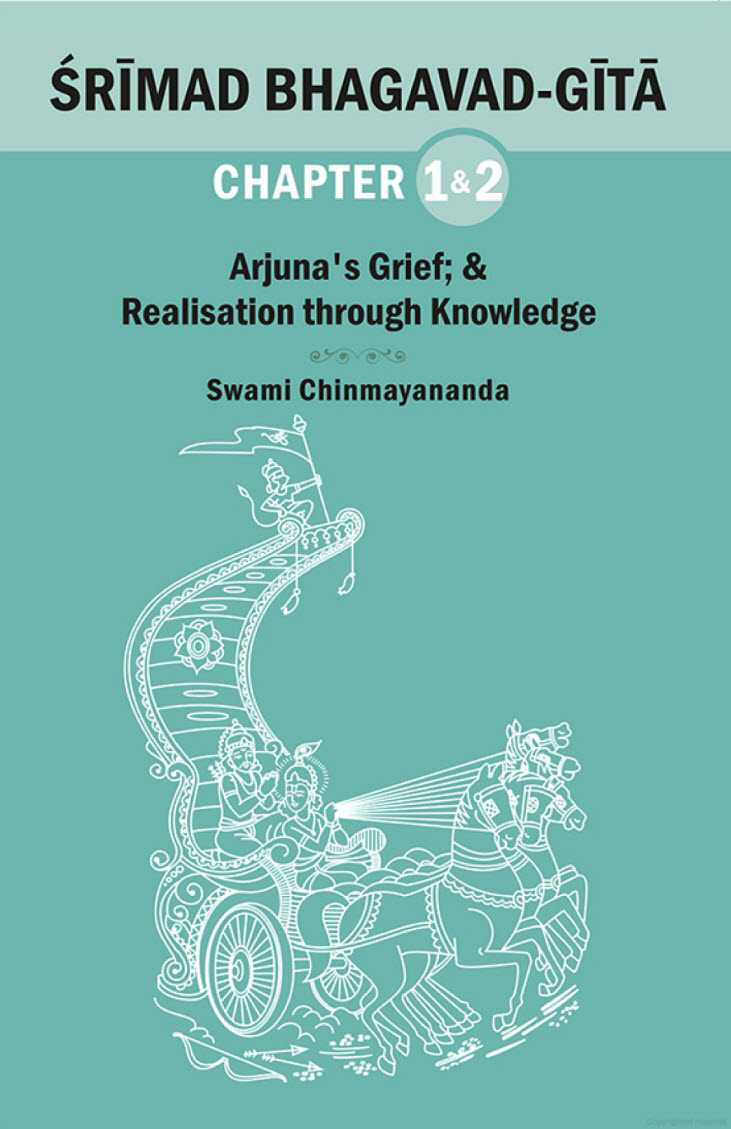
Gita Chapter 1

Gita Chapter 2
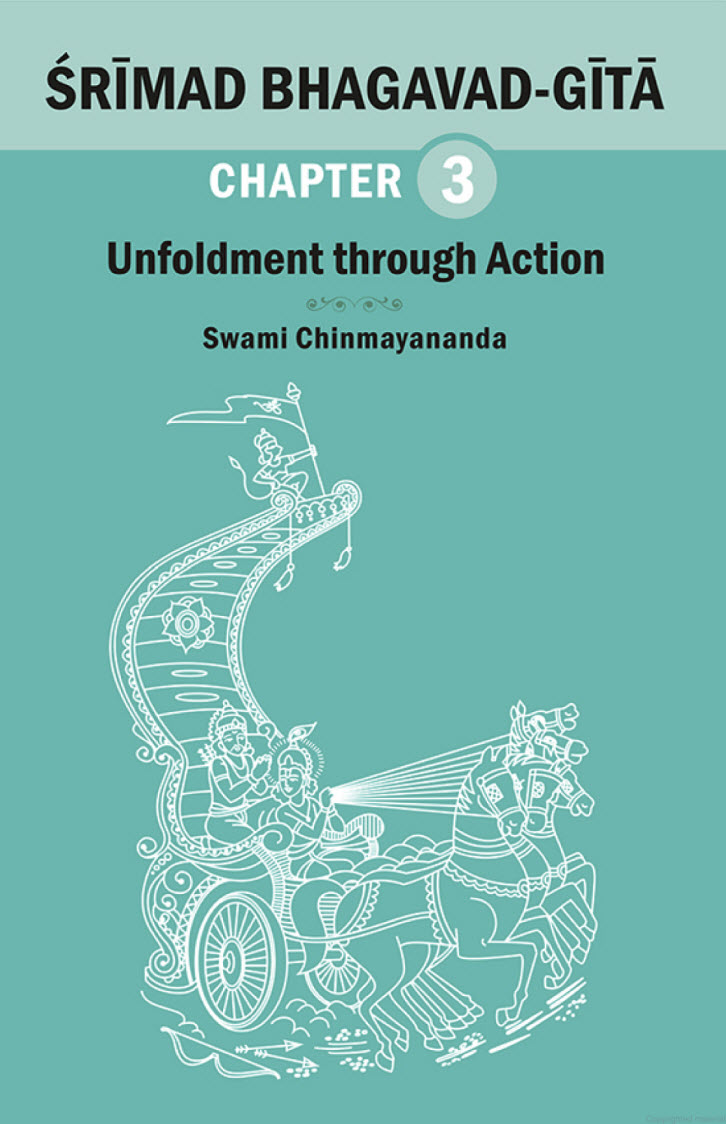
Gita Chapter 3
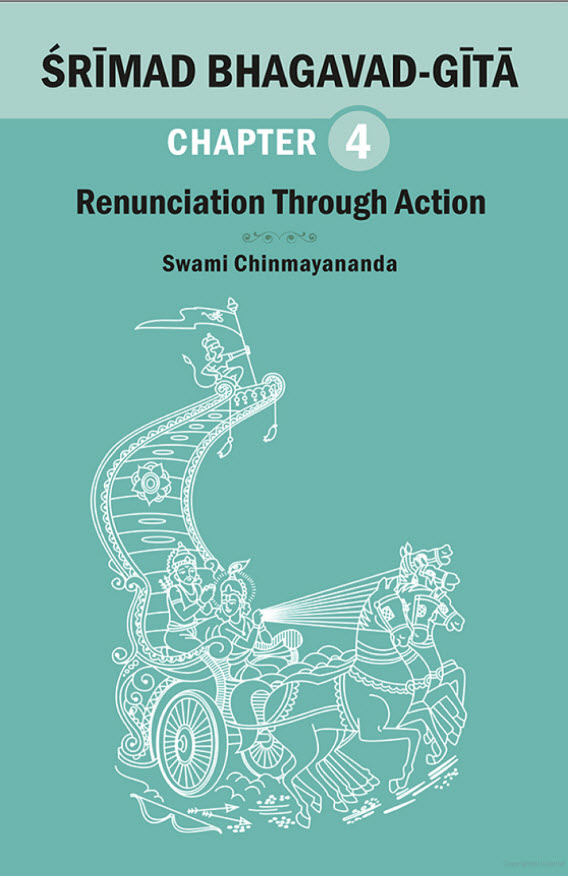
Gita Chapter 4
Merely imparting invaluable knowledge to someone is not enough. The recipients of that knowledge must appreciate its value and have faith in its authenticity. Only then will they put in the effort required to implement it practically in their lives. In this verse, Shree Krishna establishes the credibility and importance of the spiritual wisdom he is bestowing on Arjun. Shree Krishna informs Arjun that the knowledge being imparted unto him is not newly created for the convenience of motivating him into battle. It is the same eternal science of Yog that he originally taught to Vivasvan, or Surya, Sun God, who imparted it to Manu, the original progenitor of humankind; Manu in turn taught it to Ikshvaku, first king of the Solar dynasty. This is the descending process of knowledge, where someone who is a perfect authority on the knowledge passes it down to another who wishes to know.
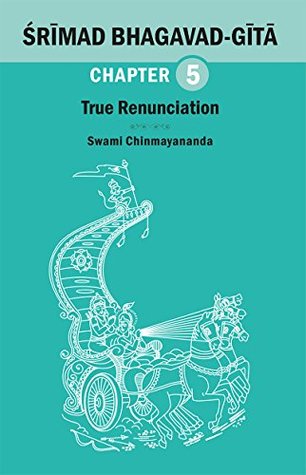
Gita Chapter 5 - Karm Sanyās Yog

Gita Chapter 15 - Puruṣhottam Yog
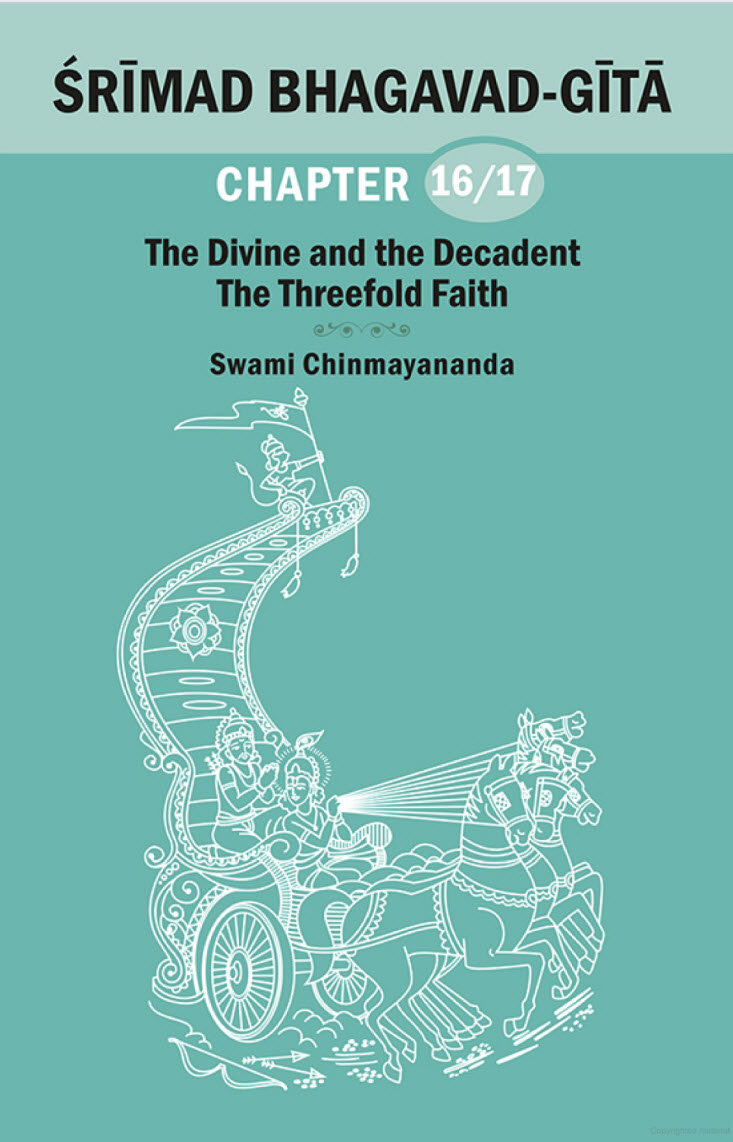
Gita Chapter 16 - Daivāsura Sampad Vibhāg Yog

Gita Chapter 17 -Śhraddhā Traya Vibhāg Yog

Gita Chapter 18 - Mokṣha Sanyās Yog

Bhaja Govindam
It is presumed that the first twelve verses came spontaneously from Sankara and that each of the fourteen disciples contributed one verse each. Sankara finished the last five verses. This song is also known as Moha Mudgara (the hammer that destroys delusion).

Drg Drsya Viveka
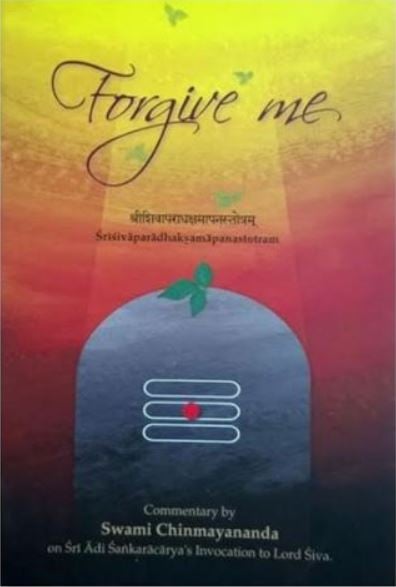
Forgive Me
Bhagavan Adi Shankaracharya was a consummate spiritual genius, poet, thinker, writer, crusader, advaitin and bhakta all rolled into one.
In this hymn, "Forgive Me", the seeker is on a wholesale confessional mode - sincerely remorseful for relegating the Lord to an insignificant position in his life.
The greatest spiritual sin is amnesia of the one responsible for our very existence.
Swami Chinmayananda's vivid and lucid commentary makes this deceptively slim volume cathartic release for any devotee. Just fourteen verses - but they lead up the devotee to a hysteric release and resurrection! Experience it for yourself!
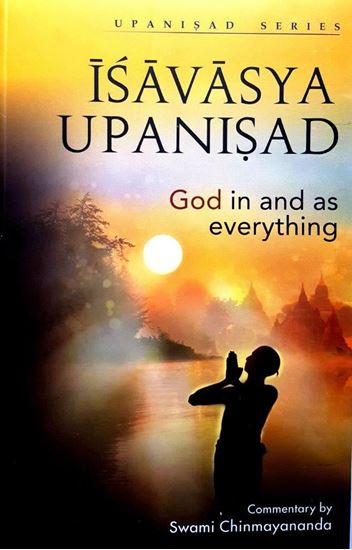
Isavasya Upanisad
The Ishavasya Upanishad (or simply Isha) is one of the shortest of its kind, and basically represents a brief philosophical poem discussing the soul/self (Atman). This edition contains the Kanva recension, consisting of 18 verses.
The words “Isha vasyam” literally translates to “enveloped by the Lord” and refers to the theory of soul (Atman); a concept used in both dualism and non-dualism. This book however, including the commentary of Shankara, focuses on non-dualism (advaita).
The title in IAST is: Īśāvāsya Upaniṣad, Śaṅkara Bhāṣya.
In Devanagari: ईशावास्य उपनिषद्, शङ्कर भाष्य
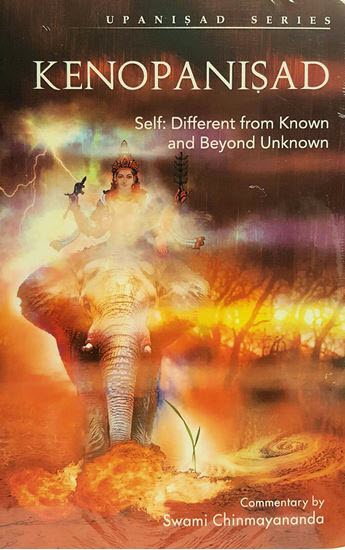
Kenopanisad
The path to Realisation begins with enquiry of the source or the cause of Life. By what or by whom, how and why have we been imbued with Consciousness - the life-giving force - that enables us to perceive and respond in this world.
An enquiry into this constitutes the subject matter of the Kenopanishad. Part prose and part poetry, the Kenopanishad is a short treatise exploring the supremacy of Brahman, the eternal Truth and the path through which the knowledge of Brahman can be realised.
Swami Chinmayananda's erudite commentary on the Kenopanishad, is peppered with humour and timeless anecdotes that paints a vivid picture and gives a modern context to this age-old wisdom.
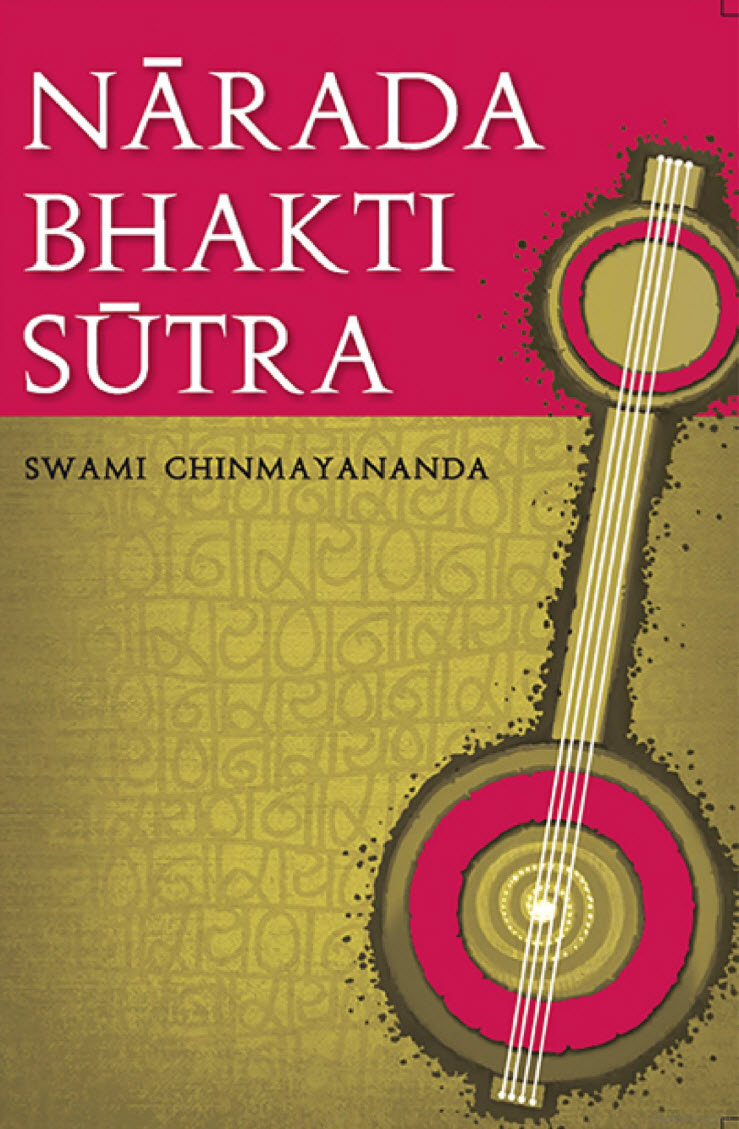
Narada Bhakti Sutra
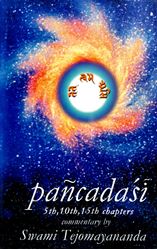
Pancadasi

Sadhana Pancakam

Shrimad Bhagavata
Masterfully profound and delightfully enchanting, Shrimad Bhagavata abounds in work-paintings of the Supreme Lord's wondrous and endearing avatars, divine sports and devotees-paintings that kindle, intensify and establish devotion in one's heart. This spring of devotion leads one to satsang, to the Guru and to teachings that unveil one's essential nature of Brahman.
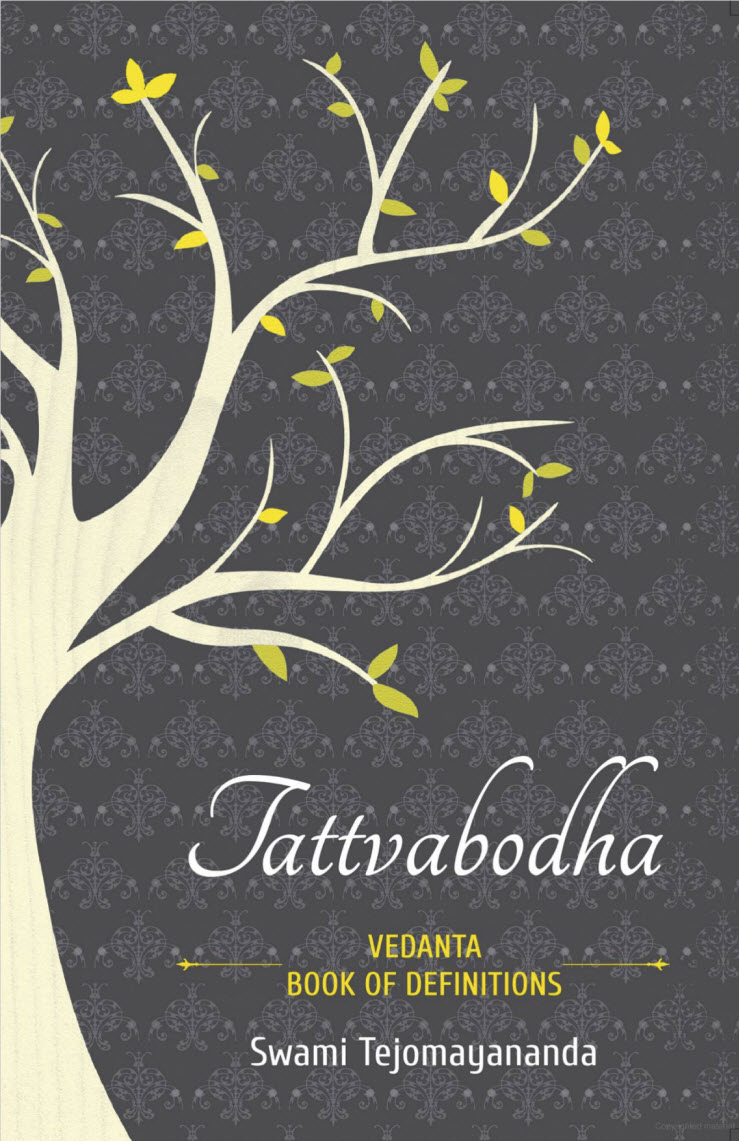
Tattvabodha
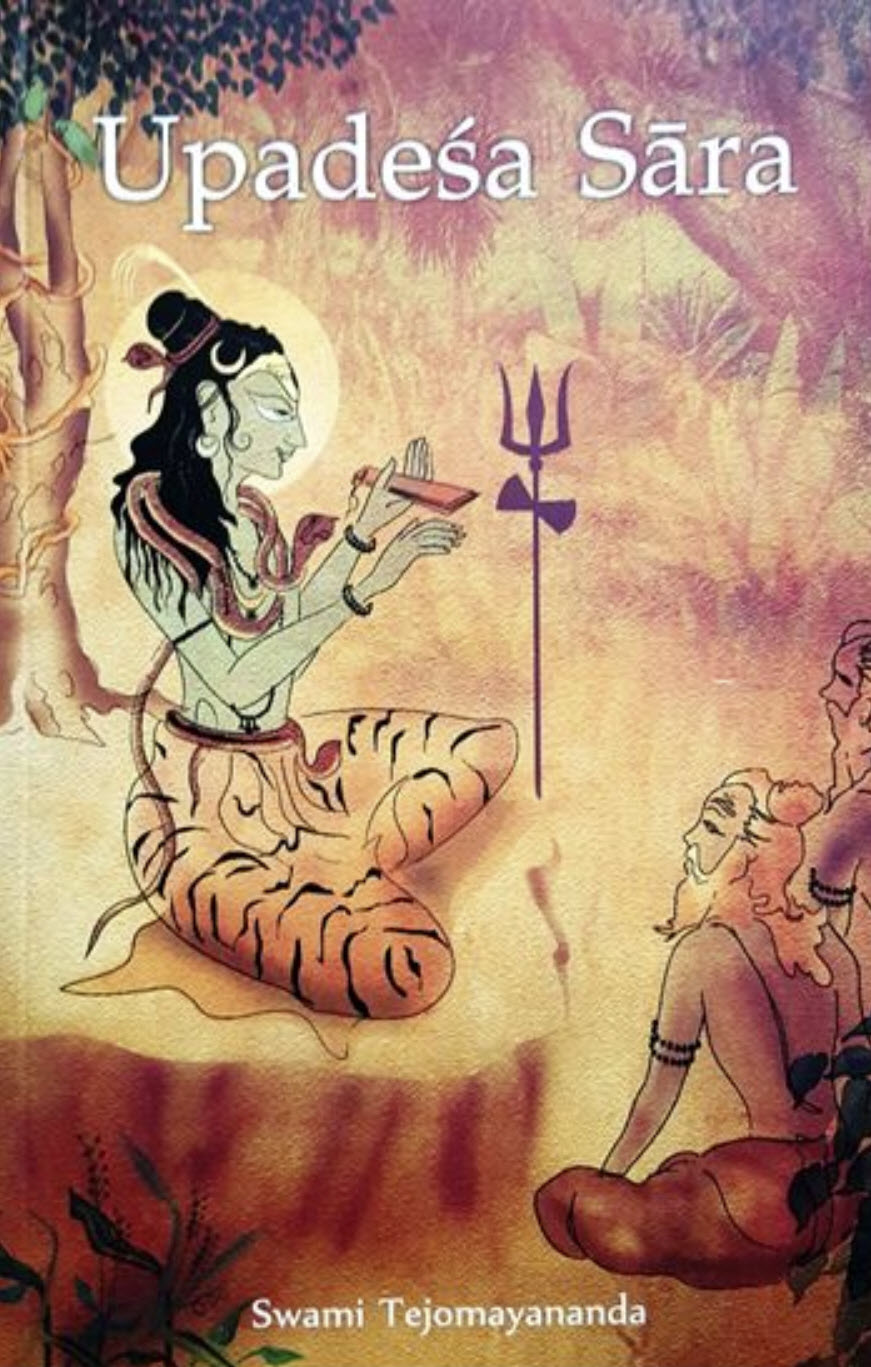
Upadesa Sara
कर्तुराज्ञया प्राप्यते फलम् |
कर्म किं परं कर्म तज्जडम् || १ ||
karturājñayā prāpyate phalam |
karma kiṁ paraṁ karma tajjaḍam || 1 ||
By the command of the Creator the result is obtained.
Is karma the Supreme? That karma is inert. (1)
Note: “by the command” can be translated as from the command.
“By the command of the Creator” can be translated as by the direction of the doer.
“Doer” can be translated as maker.
“karma” means action.
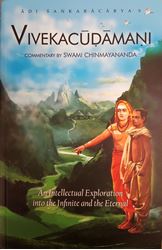
Vivekacudamani
Composed by the Sage, Adi Sankaracharya, Vivekachoodamani is in the form of a dialogue between the student and the Teacher, with the latter guiding the student along the spiritual path.
Swami Chinmayananda's commentary is the perfect companion for students walking the spiritual path in understanding its timeless wisdom.
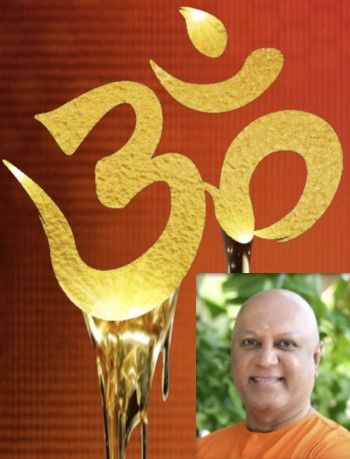
Vedanta Madhuryam
The near and dear do bring some cheer in life, but these relationships do cost as it brings a lot of fears and tears which will in time disappear. However, there is one and only one thing which is the nearest, the most beloved, the very source of happiness, which never leaves us and is completely free! It is the undotted 'I', my very own dearest Self. It is 'my own sweet home', the only one I truly own.
Vedanta introduces this ever sweet Self to me and makes me truly Self-centred, and that is its beauty and fascination. Empowered by Self-knowledge Arjuna became victorious, Buddha became Enlightened and Swami Chinmayananda became loved and revered.
Vedant Madhuryam - My Dearest Sweet Self is one more beautiful composition of Swami Tejomayananda, himself a Master exponent of Vedanta. The verses and the commentary give us a taste of the sweetness of Vedanta and compelling reasons why we should study it. Why wait for the twilight years of life, when you can be happy here and now.
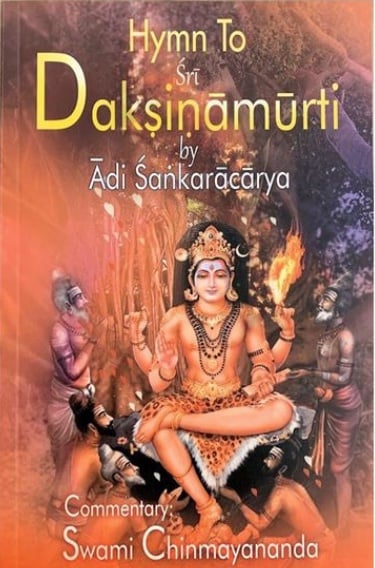
Sri Daksinamurti
The Upanishads proudly declare - Brahman alone is the Reality; the world of change is a mere delusion.
The pregnant import of this ethereal declaration forms the basis for exploration of the philosophy of Advaita Vedanta in Sri Adi Shankaracharya's Dakshinamurti Stotra. Though containing only ten verses , it packages a punch of arguments, assertions and negations that clarify the confusion seekers have and guides them to the goal of spiritual Realisation through the practice of upasana
Swami Chinmayananda's commentary on the Dakshinamurti Stotra is a compelling guide to understanding its philosophical import, subtlety of expression and confident assertions.
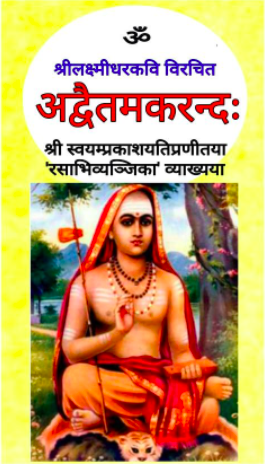
Advaita Makaranda
The wise men, like the bees who reach deep within the tender folds of the fragrant blossoms to extract and enjoy the honey, delve deep into the scriptures, and revel in 'the one and only' Truth - the Bliss of Advaita - Advaita Makaranda.
The One and Only is a unique text, wherein the author Lakshmidhar Kavi through subtle yet powerful logic, guides the reader to the doubtless conclusion, 'I am the infinite Existence-Consciousness-Bliss.'
Swami Tejomayananda's commentary makes it easy for us to reflect and comprehend such unimaginable truths like, 'I am all pervading', 'I am the omniscient cause of all', 'I am the imperishable' or 'I am the one without a second.'
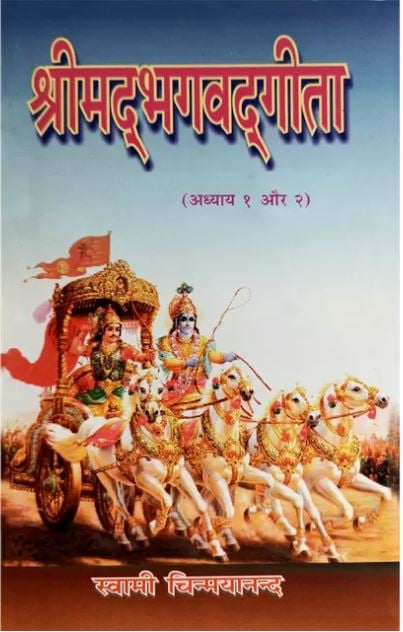
Gita Chapter 1 - Hindi
The two armies had gathered on the battlefield of Kurukshetra, well prepared to fight a war that was inevitable. Still, in this verse, King Dhritarashtra asked Sanjay, what his sons and his brother Pandu’s sons were doing on the battlefield? It was apparent that they would fight, then why did he ask such a question?

Gita Chapter 2 - Hindi
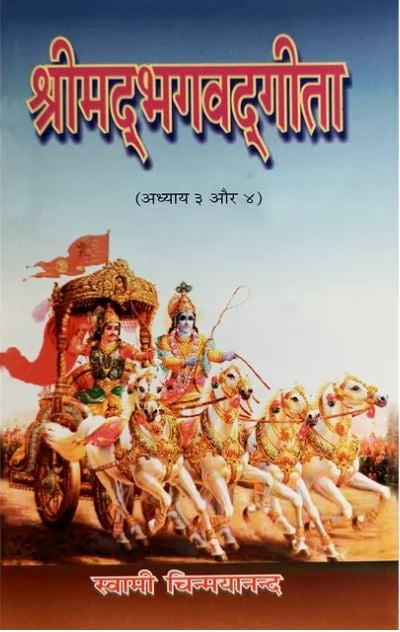
Gita Chapter 3 - Hindi
In verse 2.39, Shree Krishna explained the two paths leading to spiritual perfection. The first is the acquisition of knowledge through the analytical study of the nature of the soul and its distinction from the body. Shree Krishna refers to this as sānkhya yog. People with a philosophic bend of mind are inclined toward this path of knowing the self through intellectual analysis. The second is the process of working in the spirit of devotion to God, or karm yog. Shree Krishna also calls this buddhi yog¸ as explained in the previous verse. Working in this manner purifies the mind, and knowledge naturally awakens in the purified mind, thus leading to enlightenment.

Gita Chapter 4 - Hindi
Merely imparting invaluable knowledge to someone is not enough. The recipients of that knowledge must appreciate its value and have faith in its authenticity. Only then will they put in the effort required to implement it practically in their lives. In this verse, Shree Krishna establishes the credibility and importance of the spiritual wisdom he is bestowing on Arjun. Shree Krishna informs Arjun that the knowledge being imparted unto him is not newly created for the convenience of motivating him into battle. It is the same eternal science of Yog that he originally taught to Vivasvan, or Surya, Sun God, who imparted it to Manu, the original progenitor of humankind; Manu in turn taught it to Ikshvaku, first king of the Solar dynasty. This is the descending process of knowledge, where someone who is a perfect authority on the knowledge passes it down to another who wishes to know.

Gita Chapter 5 - Hindi

Gita Chapter 6 - Hindi
Krishna explains that everybody in this world acts for some selfish interest. Even a sanyasi who is interested in becoming one with the Supreme or a mystic yogi who performs severe penances are not free from selfish desire. Even desiring liberation for oneself is to be construed as a selfish desire.
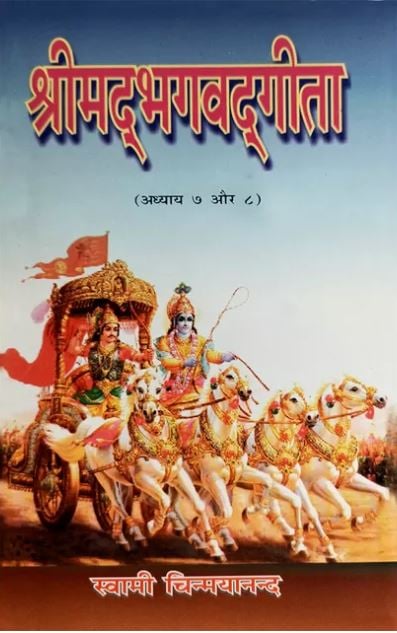
Gita Chapter 7- Hindi

Gita Chapter 8 - Hindi
